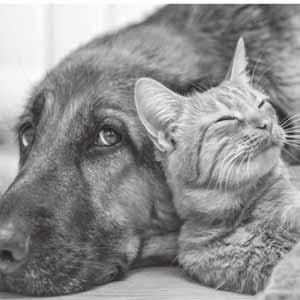Signs your pet may be in pain

Pet owners go to great lengths to treat their animals well. When a pet is ill, the animal may exhibit signs of anxiety and upset. However, sometimes it is not so easy to detect that something is awry with a pet, even if the animal is in pain.
Companion animals descend from wild animals and it is important for wild animals’ survival that they do not display signs of physical weakness. In a domestic setting, pets may hold onto some of these inherent traits, which can make it challenging for pet owners to know when the animal is feeling poorly. Cats are very stoic and it can be easy for humans to miss signs of discomfort or pain, according to Pam Johnson-Bennet, a cat behavior expert and author of several books on cats. Even dogs may not exhibit signs of pain or illness.
By learning to pick up on some cues, pet owners can determine if it is time to make a vet appointment.
• Lack of appetite: A lack of appetite might be a sign of various medical conditions or that a pet is in pain. If the animal is normally a chowhound but suddenly he or she is skipping meals or turning up his or her nose at the bowl, be sure to alert the veterinarian, especially if this behavior continues for more than a few days, and especially if water is being refused as well.
• Irritability: Cats in pain may be uncharacteristically aggressive, even growling or hissing when other pets or people in the household approach. Dogs, too, may try to avoid contact or even become aggressive. Any noticeable changes in normal behavior can be a cause for concern.
• Increased sleep: Pets in pain may sleep more as they try to heal or find it difficult to move around. Shifting positions, hunching and disinterest in chasing toys are other indicators that pets are in pain.
• Vocalizations: Both dogs and cats in pain may make be more vocal, either meowing, yelping, growling, or howling to indicate something is not right.
• Excessive grooming: The animal resource Vets-Now says that if grooming seems excessive or centralized to a spot on the body, it may be the pet’s attempt to soothe.
• Panting or altered breathing: A dog or cat who is breathing heavily while at rest may have an underlying illness and pain.
• Potty changes: Cats may miss the litter box or choose not to use it if they’re in pain. Dogs that are ill may have accidents indoors or need to go out more frequently, even if they are house trained.
Those who suspect their pets may be in pain can consult with a veterinarian and monitor symptoms carefully. Do not attempt to offer pain medication without first receiving professional advice.

